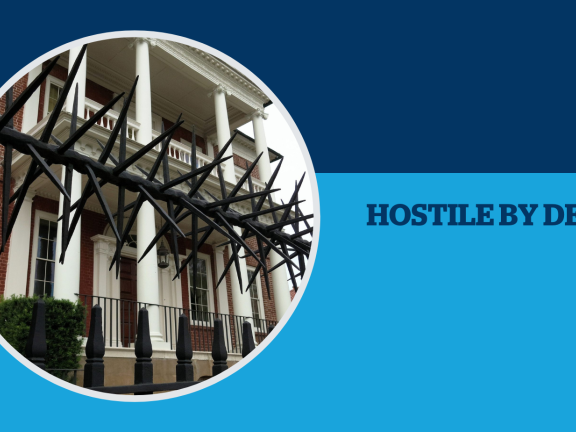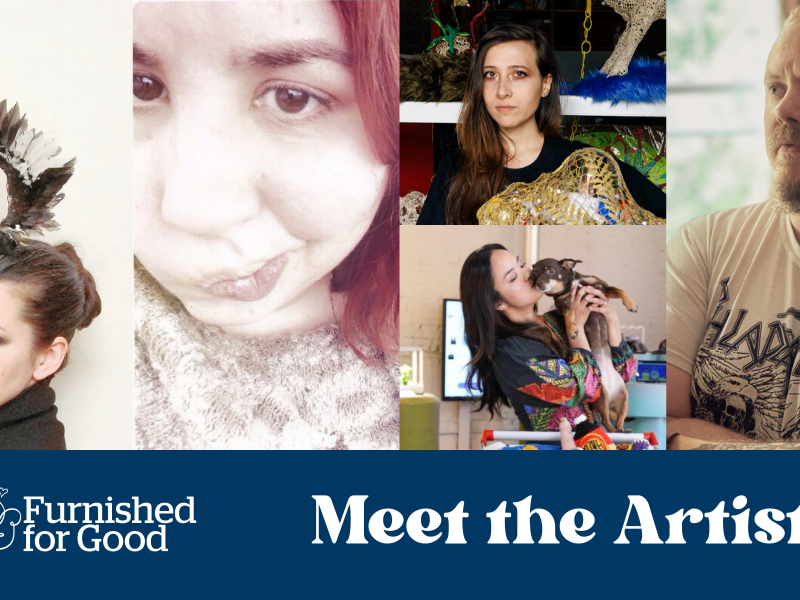Hostile by Design

Have you ever noticed seemingly-random spikes on sidewalks or ledges outside of a building? Or wondered why benches have metal separators that limit your ability to spread out in public spaces?
That is what hostile design looks like. Those features were specifically designed to keep people from loitering, sitting, or laying down in those spaces. They’re meant to scream “you aren’t welcome here!” without actually having to say anything at all.
The National Coalition for Homelessness recently released a report titled "Design Against Humanity." This report delves deep into the global use of hostile design, shedding light on how it's employed worldwide to restrict the use of public spaces. "Design Against Humanity" provides a history of these design practices and tangible, real-world instances that highlight this issue. Full Report linked here.
Drawing data from major cities including Los Angeles and Seattle, the report lays out alarming examples of hostile architecture. In Los Angeles, for instance, the report reveals that metro stations are blaring loud classical music around the clock, an intentional tactic aimed at discouraging individuals from finding shelter and rest from the outside elements.
Digging even deeper, the report emphasizes massive spending by New York City, where over $70 million was allocated for the installation of slanted benches. These benches, however, aren't designed for comfortable seating but rather for leaning, rendering them unsuitable for rest. This investment equates to more than 1,700 rental units that could have provided year-long housing for those in need.
Additionally, both public and private developers tend to prioritize cost-efficiency over safety, energy efficiency, and other important features in low-income housing construction. This is just another example of hostile design and how it perpetuates the cycle of exclusion and marginalization.
Not providing enough overhead lighting and storage is also common in low-income units. Energy efficiency is not considered when choosing appliances, so tenants end up using more energy and paying higher bills. So-called luxuries like balconies and outdoor spaces are not included, despite the relatively low cost of doing so. Low-income housing is not often designed for tenants to live well. It is, however, designed to pass costs on to the tenant and not the developer.
That’s why we launched the Pathways Housing Wellness Corporation. We want to rebuild existing homes in Philadelphia into moderate-sized multi-family units that not only fit into the landscape of the neighborhood, but provide all of the amenities needed to live well regardless of your income status.
For-profit developers of affordable housing, of course, want and need to make a profit on their projects. As a nonprofit, we are uniquely situated to be able to provide affordable housing that is actually affordable and not reliant on profit.
As an agency that master leases hundreds of low rent units throughout the city, we see a lot of corners cut to make rental units profitable. We can’t solve all of the issues surrounding affordable housing, but we can do this:
- Understand that the digital divide is the new redlining and ensure that any housing we build and/or manage will make internet service accessible to all tenants.
- We know that heating and cooling systems that save landlords money to install are much more expensive for tenants to run (i.e. electric heating units at floor level). We will use green sources to help reduce both energy use and cost so that people can put their resources toward moving forward with life goals.
- We will make sure there is adequate ceiling light throughout our units. When possible, we will install ceiling fans.
- Appliances included in the units will be energy efficient and of good quality.
- There will be storage solutions built in so individuals and families have adequate space to store their treasured belongings.
We know that when treated with respect and dignity, people thrive. We believe that investing upfront in providing an elevated standard of low-income housing, without including hostile architecture elements, is an essential need for our community and we are proud to be able to provide that through the Pathways Housing Wellness Corporation.


